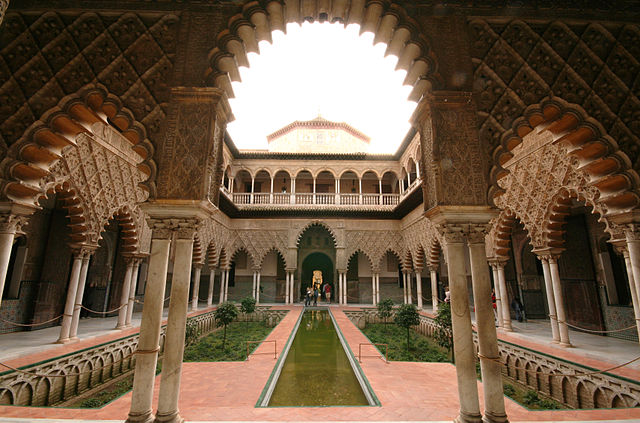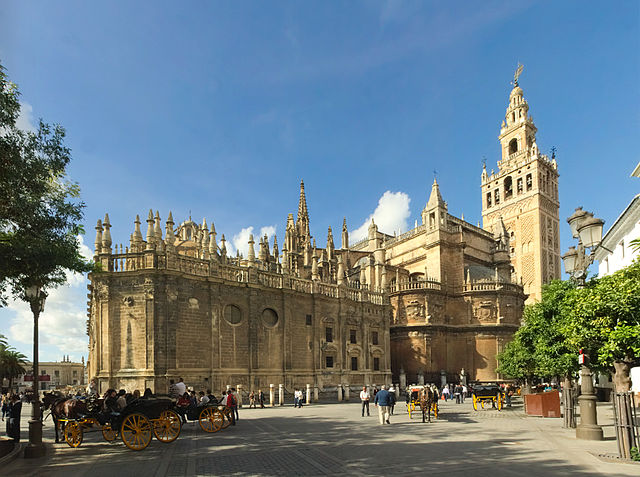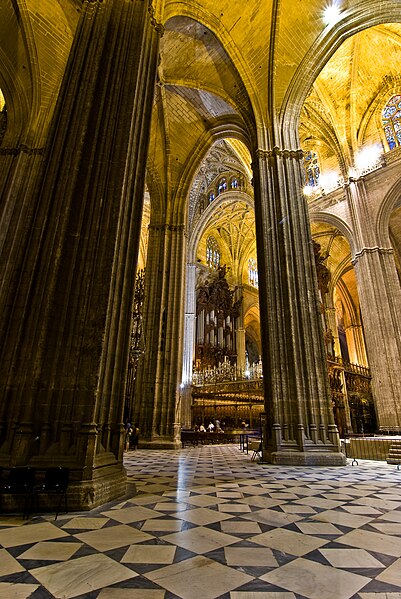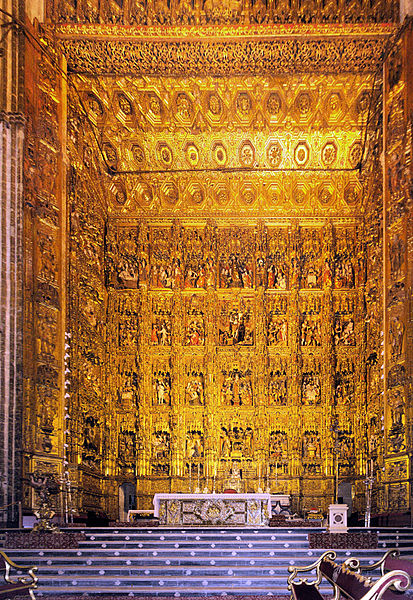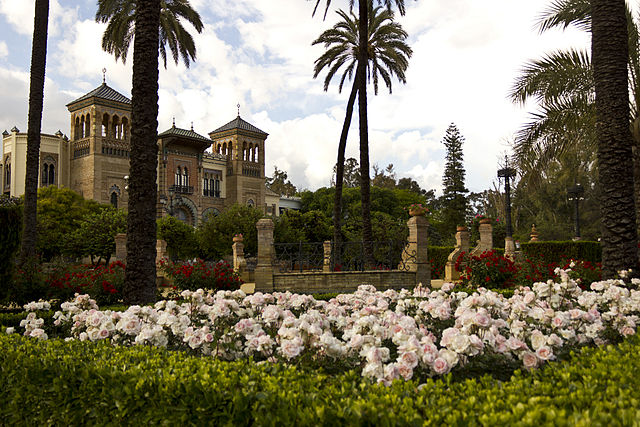Seville (Spanish: Sevilla) is Andalucía’s largest and most sophisticated city. It is probably the most Baroque city in Spain. Its Old Town, with an area of 4 square kilometres (2 sq mi), contains three UNESCO World Heritage Sites: the Alcázar palace complex, the Cathedral and the General Archive of the Indies.
Sevilla
The Alcázar of Seville (Royal Alcazars of Seville) is a royal palace in Seville, originally developed by Moorish Muslim kings. The palace is renowned as one of the most beautiful in Spain. It is the oldest royal palace still in use in Europe, and was registered in 1987 by UNESCO as a World Heritage Site.
The Archivo General de Indias (General Archive of the Indies), housed in the ancient merchants' exchange of Seville. is the repository of valuable archival documents illustrating the history of the Spanish Empire. The building and its contents were registered in 1987 by UNESCO as a World Heritage Site.
The Cathedral of Saint Mary of the See (Spanish: Catedral de Santa María de la Sede), better known as Seville Cathedral, is a Roman Catholic cathedral in Seville. It is the largest Gothic cathedral and the third-largest church in the world. The cathedral is also the burial site of the great explorer and navigator Christopher Columbus. It is a UNESCO World Heritage Site since 1987.
Metropol Parasol, also known as Las Setas, is a wooden structure located at La Encarnación square, in the old quarter of Seville. It was completed in April 2011. It has dimensions of 150 by 70 metres (490 by 230 ft) and an approximate height of 26 metres (85 ft) and claims to be the largest wooden structure in the world.
Sevilla
The Plaza de España (English: Spain Square) is a plaza in the Parque de María Luisa (Maria Luisa Park), built in 1928 for the Ibero-American Exposition of 1929. It is a landmark example of the Regionalism Architecture, mixing elements of the Renaissance Revival and Moorish Revival styles of Spanish architecture.
The Maria Luisa Park (Spanish: Parque de María Luisa) is a public park that stretches along the Guadalquivir River in Seville. It is the city's principal green area. Most of the grounds that were used for the park were formerly the gardens of the Palace of San Telmo. They were donated to the city of Seville in 1893.
The main building of the University of Seville is known as the "Old Tobacco Factory", named for its original use. Built in the 18th century, Seville's tobacco factory was the largest industrial building in the world at the time and remained a tobacco factory until the 1950s. This beautiful building is also the setting for the renowned opera, Carmen.
The Plaza de toros de la Real Maestranza de Caballería de Sevilla is a 12,000-capacity bullring in Seville. During the annual Seville Fair, it is the site of one of the most well-known bullfighting festivals in the world. It is a part of the Real Maestranza de Caballería de Sevilla, a noble guild established for traditional cavalry training.










